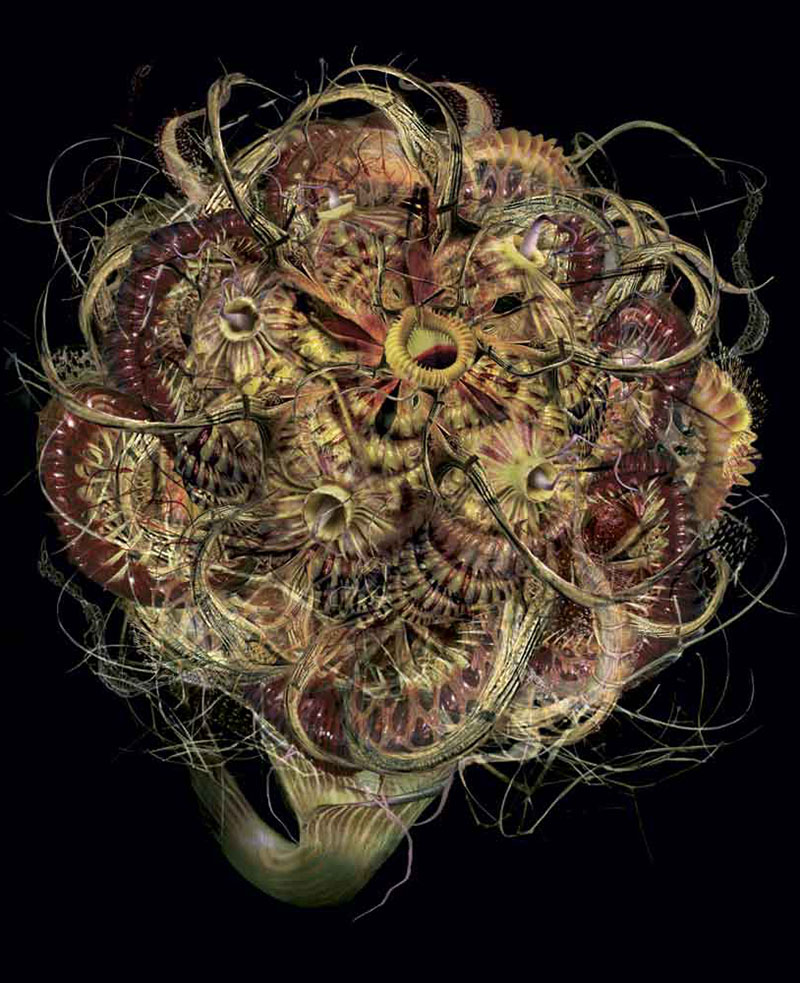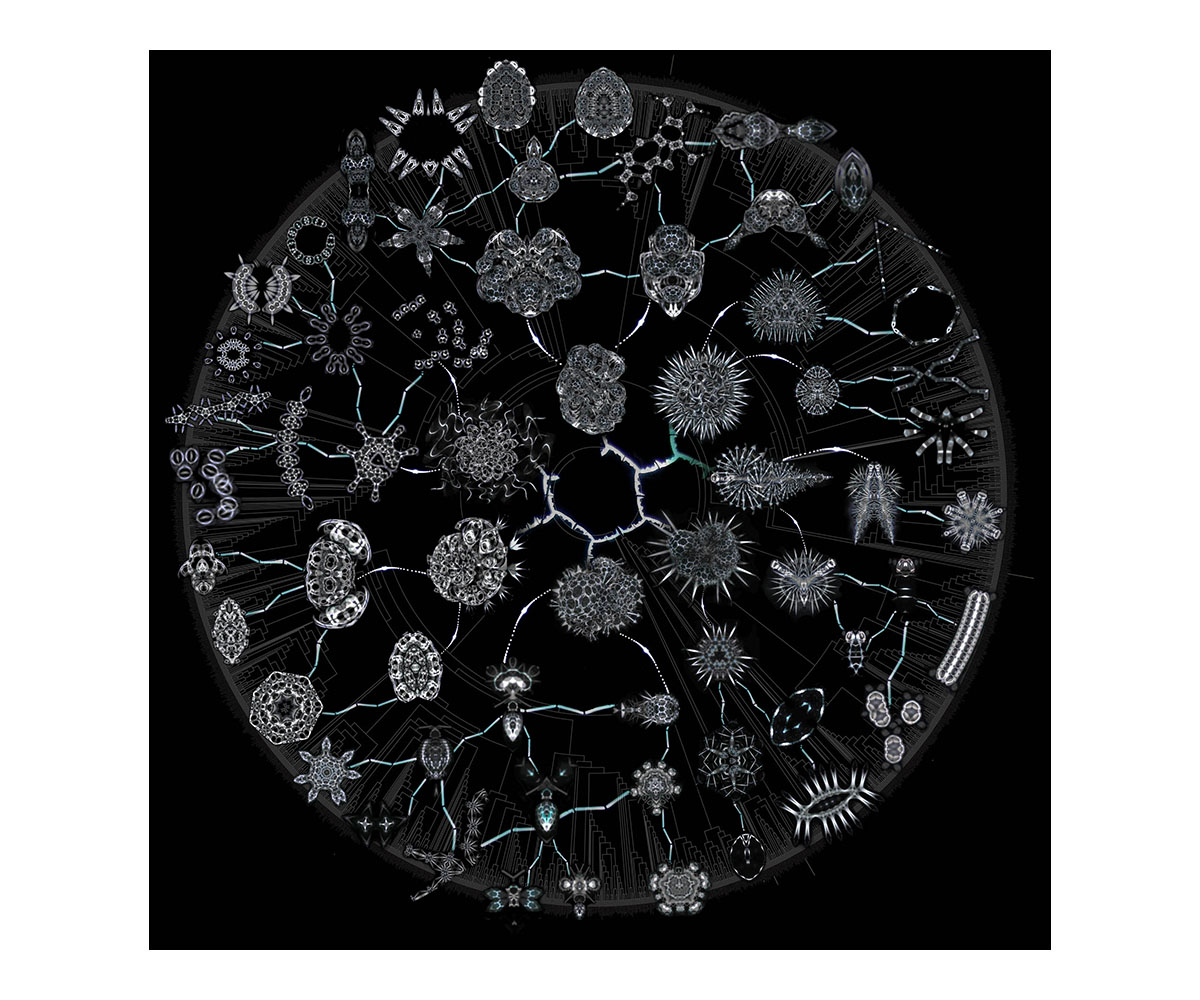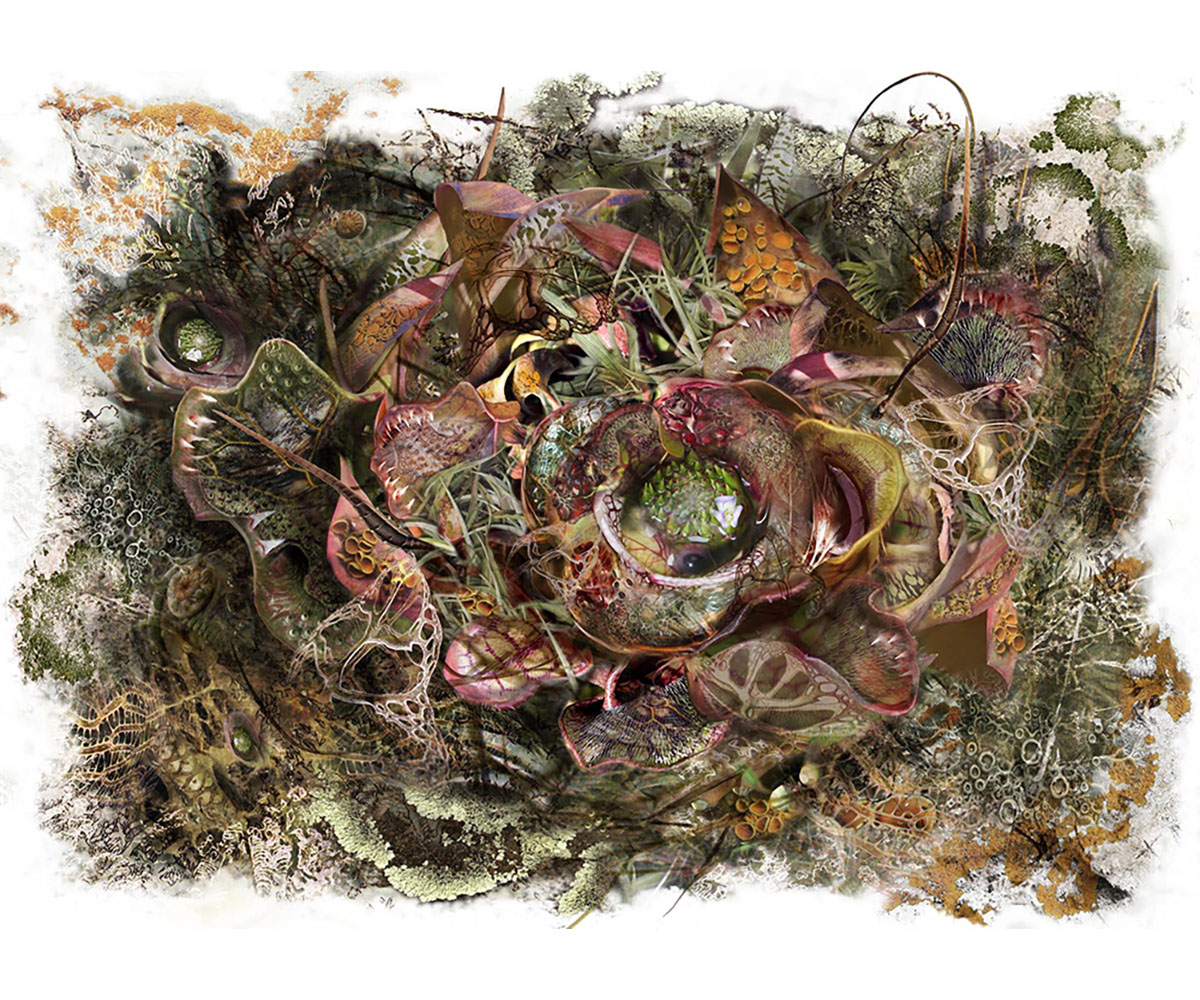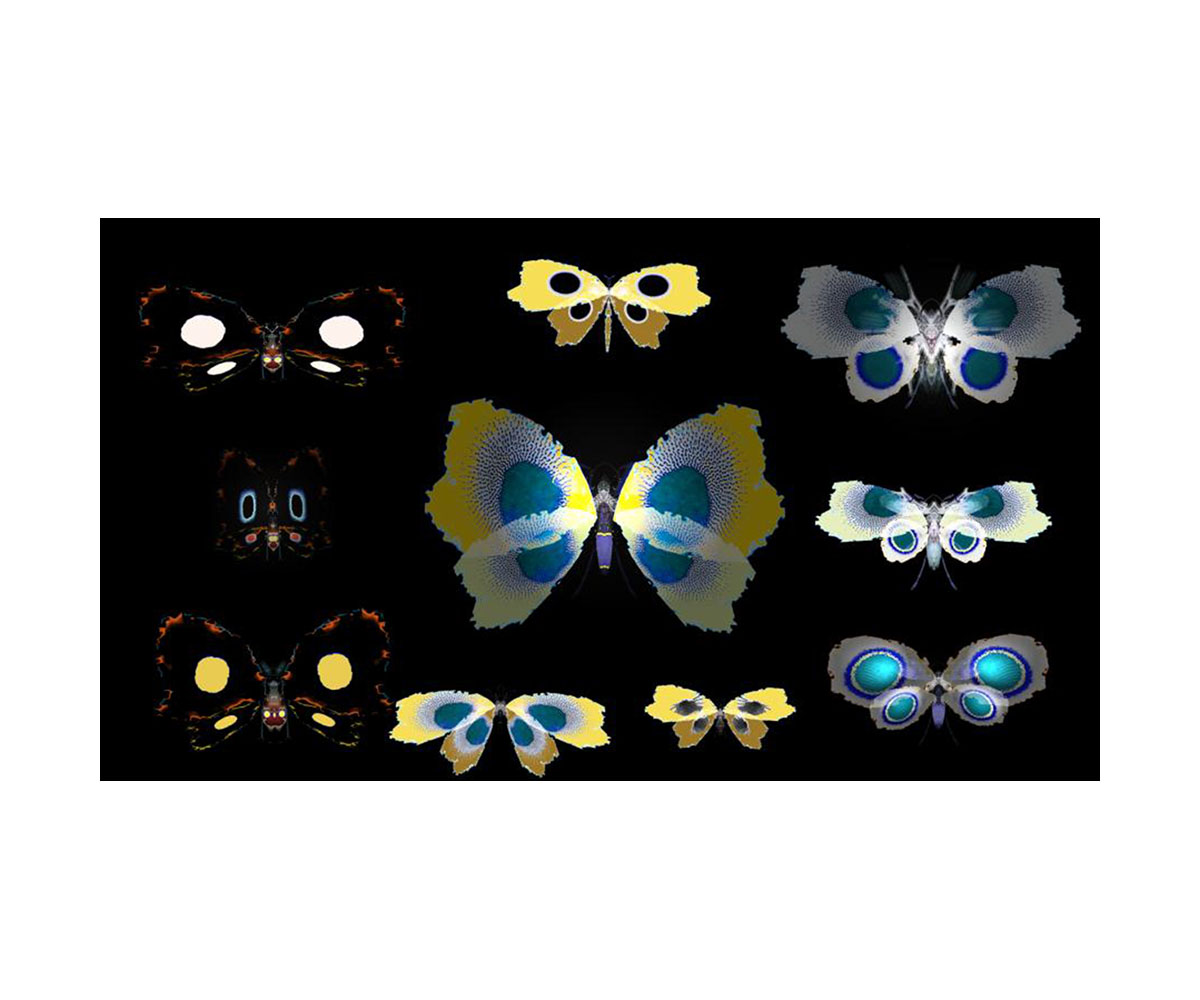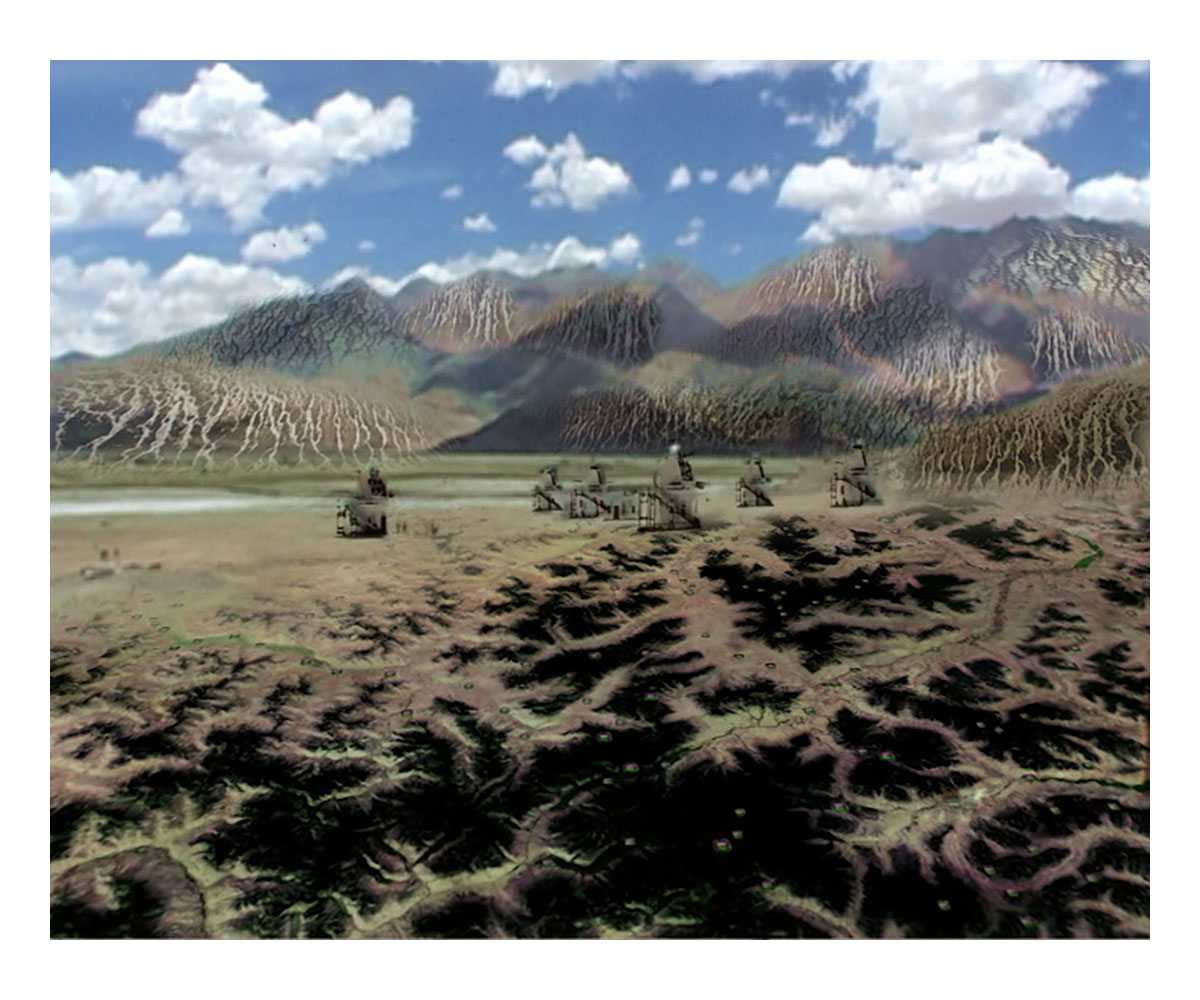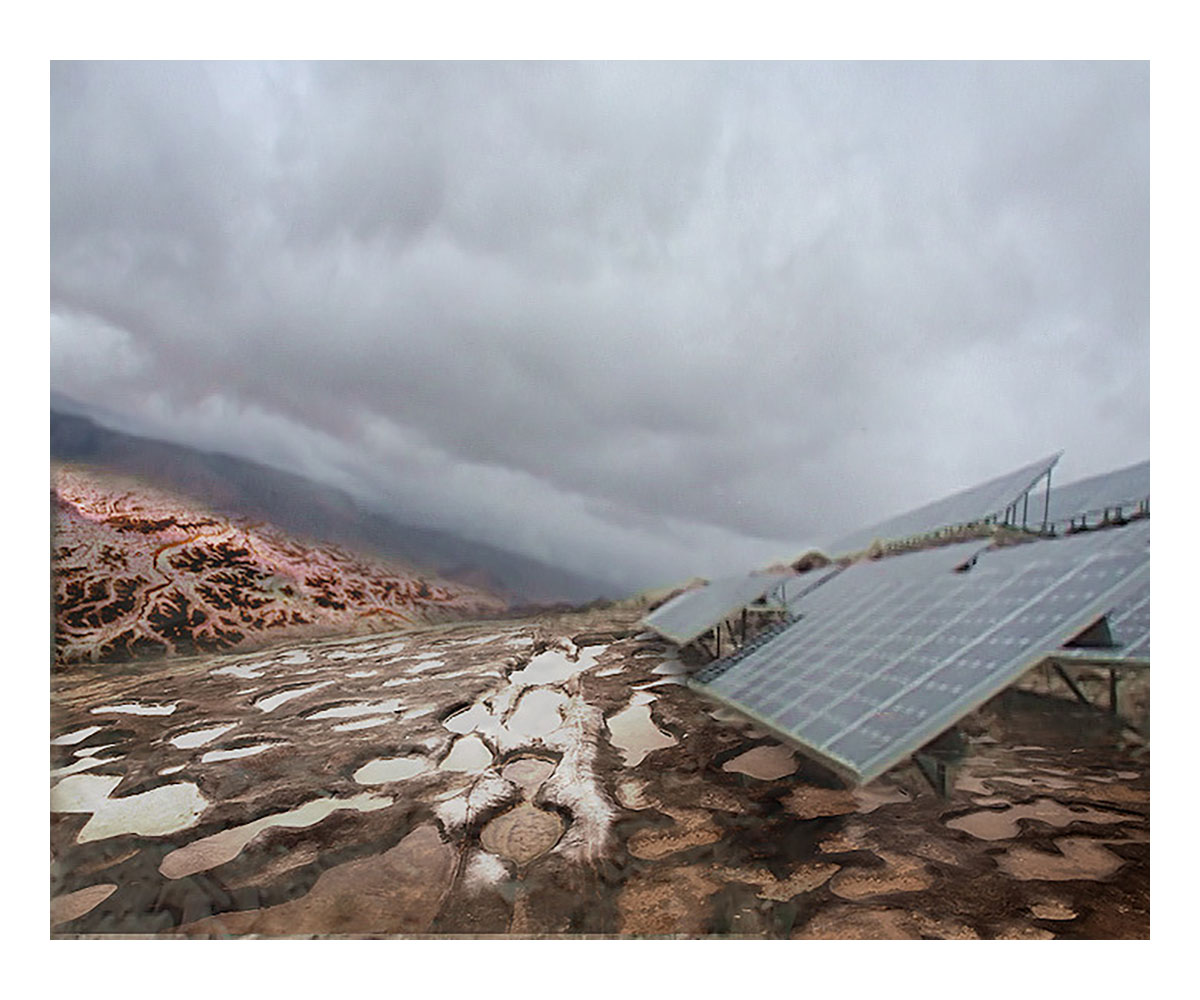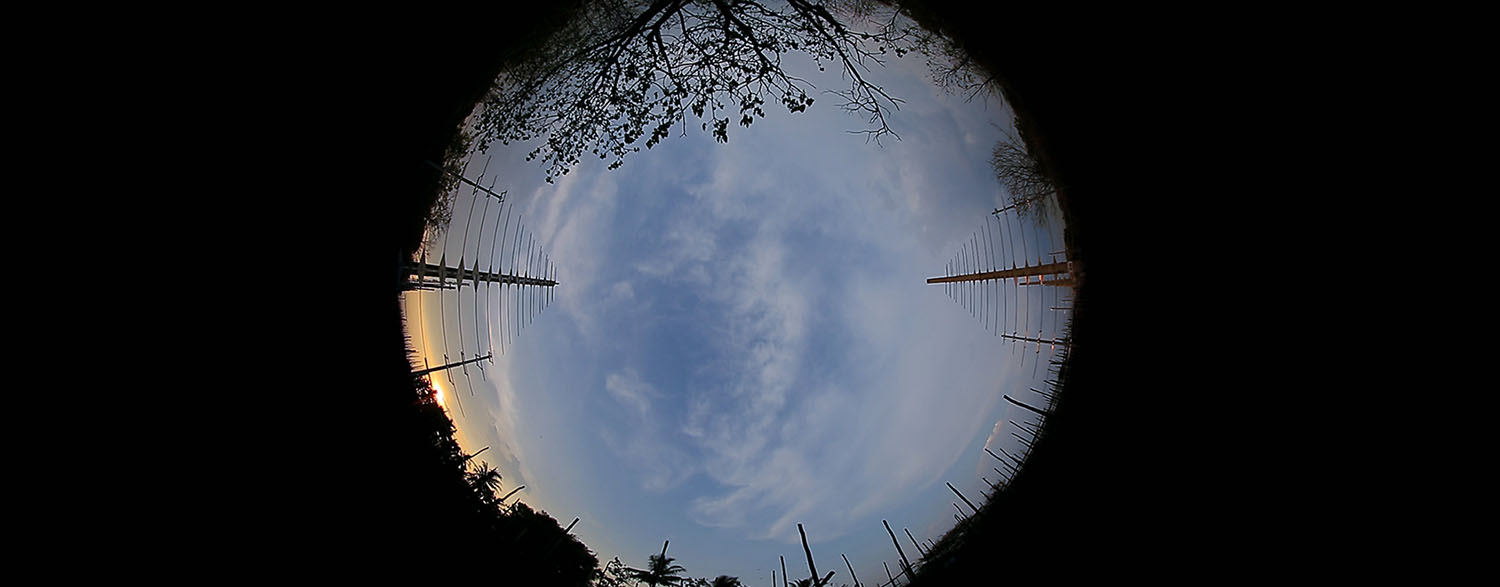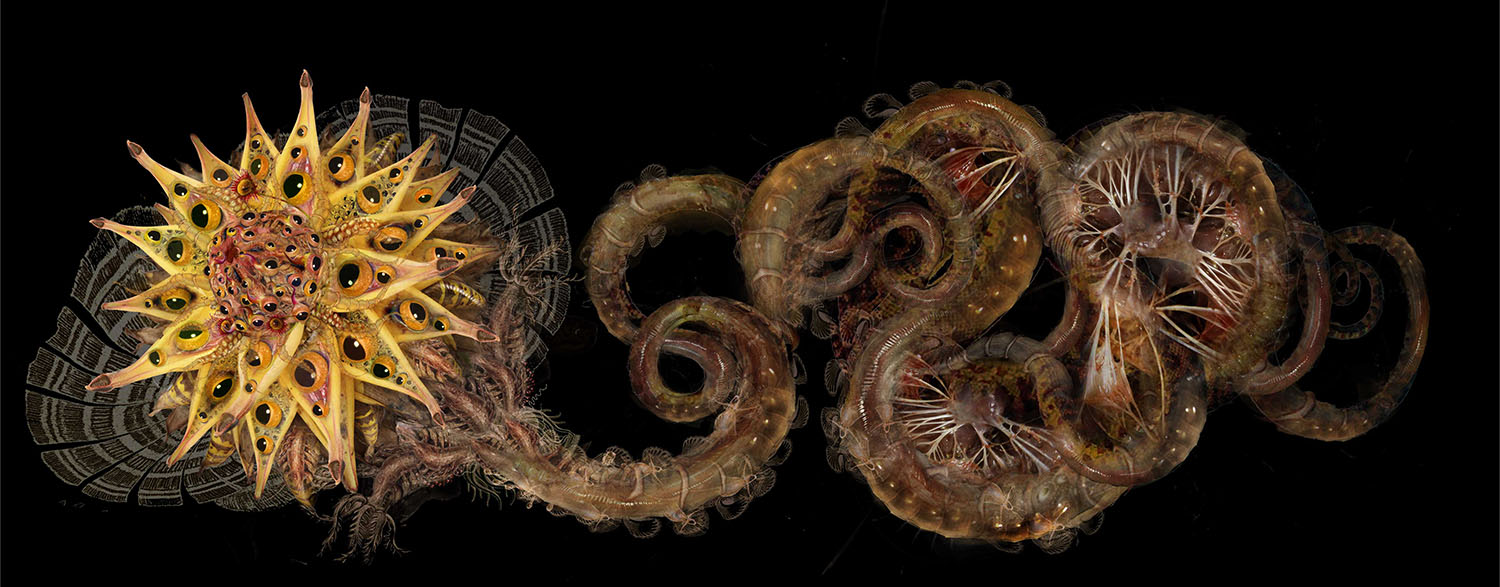ARTICLE
Rohini Devasher
Devasher uses scientific drawings and existing methods of studying complex natural systems to produce striking and informative visual vocabulary, as seen in Bloodlines (2009) which uses a video feedback loop between a television and a camera to illustrate evolution through cumulative selection; Arboreal (2011), a video and prints of tree forms that are developed using the Lindenmayer system for modelling the fractal growth of plant species; Doppelganger (2011), a video of changing dragonfly forms; Genetic Drift: Symbionts (2018), a series of drawings on prints of enmeshed biological patterns and chimeric creatures that explores the idea of genetic variation among species in ways that go beyond ordinary scientific classification; and Hopeful Monsters (2018), a video and print installation created using stock images of insects and feedback loops to demonstrate the vast diversity of forms that result from the combination of deviation and evolutionary processes. Her work also reflects how scientific practice, both professional and amateur, is framed by personal motivations and cultural assumptions; Reading into the Stars (2013), is a series of audio clips of amateur astronomers reflecting on their individual and collective fascination with the night sky; always take the weather with you (2014), is a series of cloud photographs taken near observatories as a way of shifting focus from the clear skies, desired by astronomers, to the clouds; and Atmospheres (2015) in which Devasher used a fish-eye lens to photograph the blue sky, trees and the radio telescope at the Gauribidanur Observatory, Bengaluru, as an inverted terrestrial version of the iconic Blue Marble photograph.
Devasher has exhibited her work in galleries, museums and various art events. Notable among these are Breed (2009), her first solo exhibition, at Project 88; Permutation (2011) at Nature Morte; Cynical Love: Life in the Everyday (2012) at the Kiran Nadar Museum of Art; Deep Time (2013) at Project 88 and KHOJ; Archaeologies of the Future (2016), at Vis-a-Vis Experience Centre, New Delhi; and Speculations from the Field (2016) at Dr. Bhau Daji Lad Museum. Devasher’s participation in large scale events includes the 2012 Kochi-Muziris Biennale, Fukuoka Asian Art Museum in 2014, The Missing One at Dhaka Art Summit 2016, Artists’ Film International at the Museum of Art Architecture and Technology, Lisbon in 2016 and Clouds⇄Forests at the Moscow Biennale in 2017, among many others. In 2021, Devasher, along with fellow artist Pallavi Paul, co-curated Not an Imitation at Project 88, in which she also displayed her video installation Shivering Sands (2016). Devasher has won the Sailoz Award from College of Art, New Delhi in 2001, the Inlaks Fine Art Award in 2007 and the Sarai Associate Fellowship in 2010, among others. She is represented by Project 88.
At the time of writing, Devasher lives and works in Noida.
Bibliography
Our website is currently undergoing maintenance and re-design, due to which we have had to take down some of our bibliographies. While these will be re-published shortly, you can request references for specific articles by writing to hellomapacademy@map-india.org.




